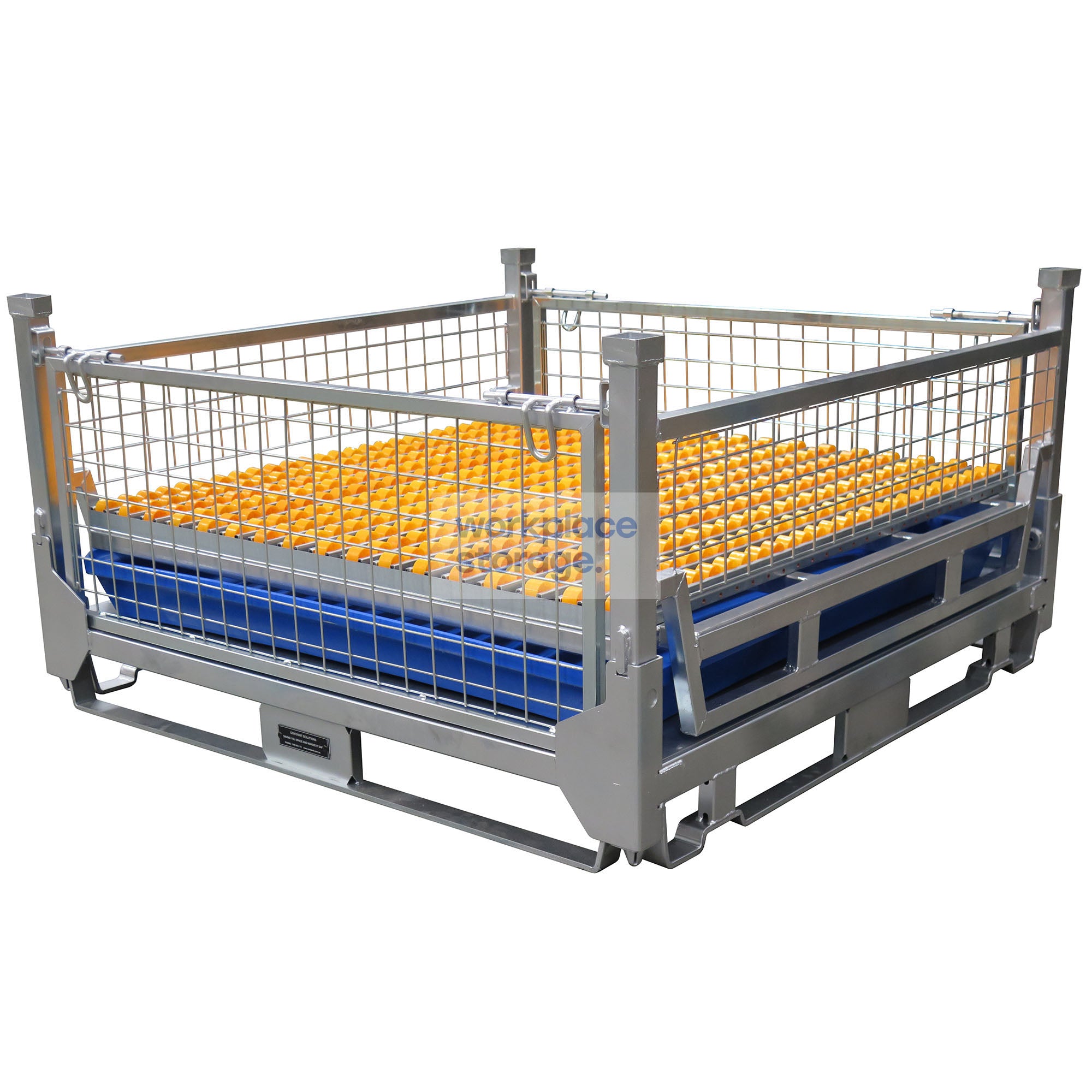
Battery Storage and Handling Challenges
Storage and handling of batteries in workplace environments such warehouses and workshops is common creating many materials handling challenges. There is a strong chance of back injuries due to the heavy nature of batteries in today’s workplace. The Australian Bureau of Statistics 2017–18 National Health estimates around 4.0 million Australians (16% of the population) have back problems, highlighting the critical nature of improving manual handling solutions for batteries. It is estimated 70–90% of the population will suffer from lower back pain in some form at some point in their lives which is an alarming statistic that can be reduced in at least some areas through fairly simple manual handling system implementation.
Pallet cages with positive locking base designs allowing storage in pallet racking safely and are now available with rollers allowing safer loading and unloading. This smart design means batteries can be effortlessly rolled from the front of the pallet to the rear and vice versa when needing to pick a battery for changeout on equipment. Integrating this concept with a manual or electric scissor lift trolley also helps reduce change of injury in the battery handling process. Battery providers can also assist in the process by pre loading your batteries into the cage rather than onto a pallet so they can send future shipments to your site pre loaded into your bunded battery handling cages. This step also helps prevent damage to batteries in transport to your site.
There are Australian manufacturers who also provide battery lifting jibs to assist in the workshop and maintenance areas for safe and seamless battery changeout particularly for large batteries used in mining equipment. Reducing risks across your workplace from logistics to storage to installation of batteries is all important to reducing the chance of your operation adding to the statistics of back or other workplace related incidents.
Further to the manual handling risks associated with battery handling and storage there is also compliance requirements to be considered. The cages offered by Workplace Storage are a way to assist in battery storage compliance. In addition to bunding whilst the battery is being stored there is also end of life to be considered and then the recycling phase. It is important that batteries are transported safely and securely to recycling plant to ensure no spills and environmental damage occurs in the final stage of their journey.
For long term and bulk quantity battery storage applications there is other solutions such as outdoor class 8 corrosive dangerous goods storage units can also be considered to ensure that there is less DG storage inside your warehouse as there is possibly restrictions in place for bulk DG storage within your warehouse or workshop facility – battery cages can be included in these outdoor stores so that when you do bring the cage into your workshop or maintenance area you can still experience the full benefits that can be achieved.
When reviewing risks associated with battery storage and handling in your workplace ensure you conduct an end to end assessment taking into consideration all the potential risks before implementing a final solution. You may need to consider including a DG consultant but most likely a quality industrial storage systems supplier will need to be engaged to recommend the best solution for your battery handling and storage requirements.
